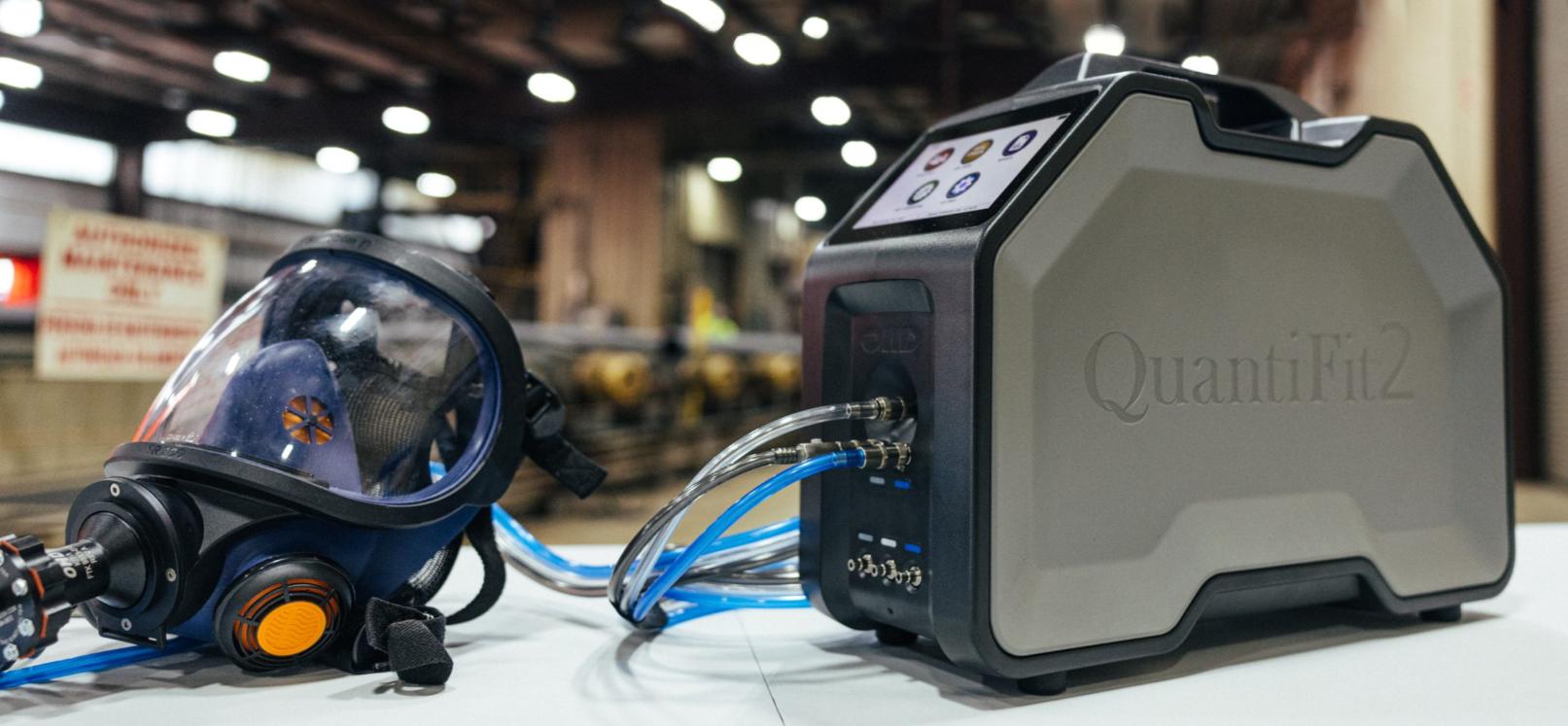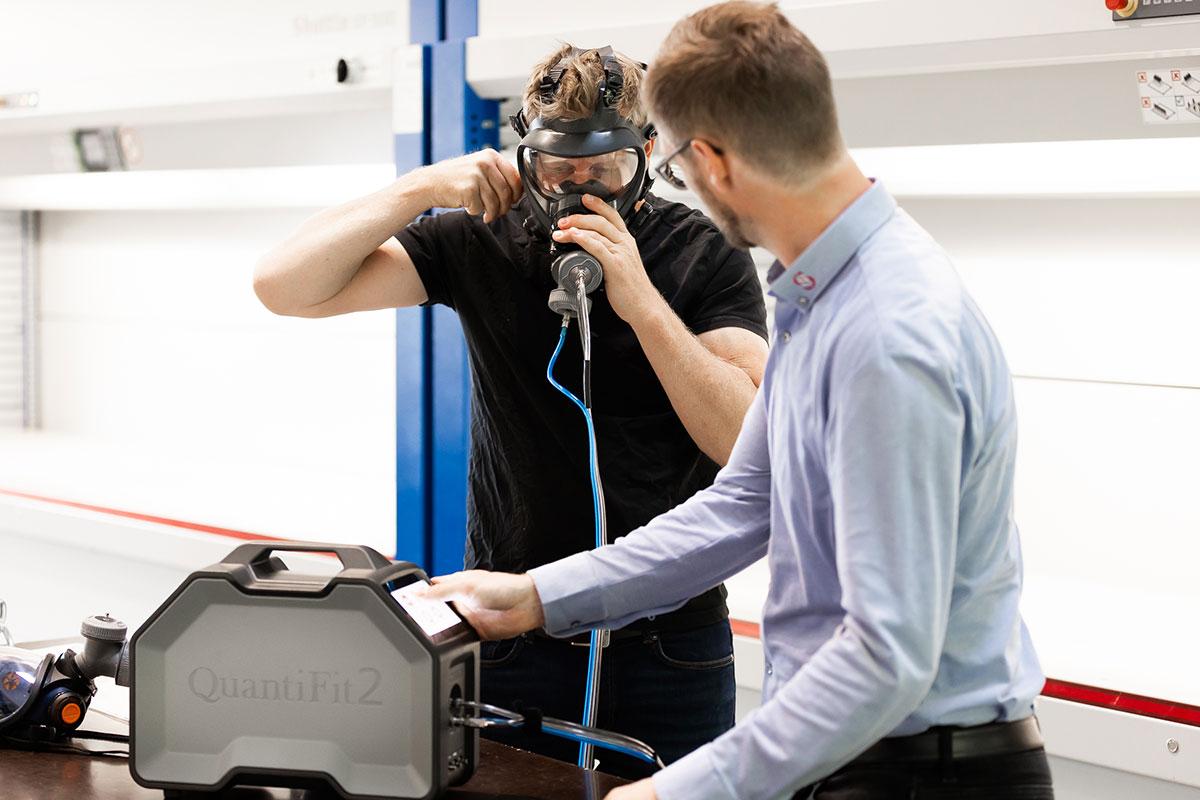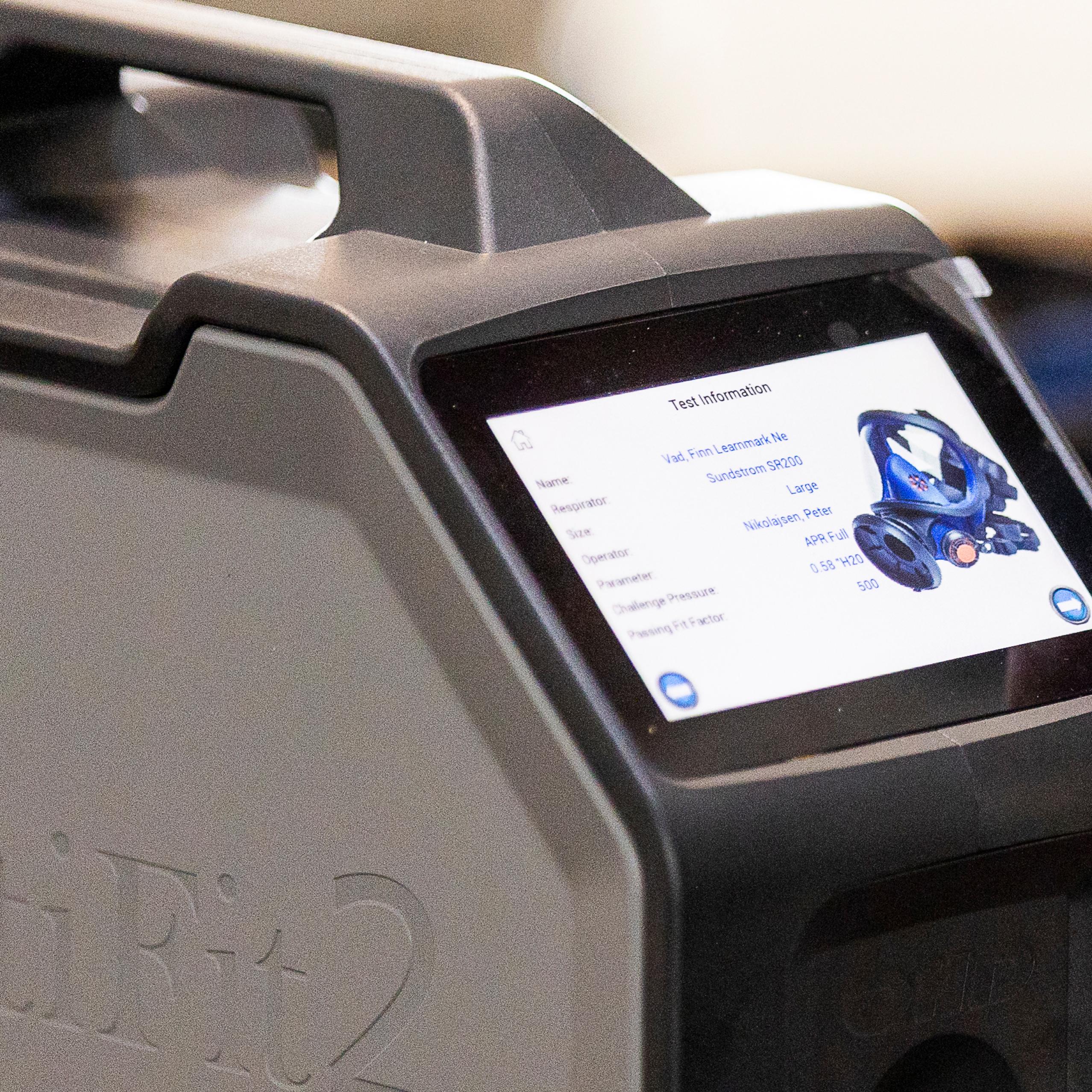Are you fit enough for your mask?
Published: 24/04-2023 | Readtime: 2m 27s
With a fit test, you can be sure of optimal protection when using respiratory protection – for example, when working with asbestos. At Stennevad, you have the opportunity to be tested by a competent professional trained in the use of an approved testing machine.
In collaboration with leading respiratory protection suppliers, we offer testing with Quantifit2, which, as the name suggests, uses the quantitative test method (CNP).
We can test models from RSG, Sundström, STS, CleanAir – with the possibility of even more.
Call us at +45 75 14 40 00 or
Below you will find an explanation of everything you and your colleagues need to know.

What is Fit Testing?
The test demonstrates how a person achieves optimal fit with a specific respirator through a controlled and standardized test that provides a pass/fail result and must be performed by a suitably trained, competent person. Tests must be repeated at regular intervals and when the user's facial features change; eg. after dental surgery.
How does a Fit Test take place?
Respirators protect the wearer against dangerous substances. Close-fitting respirator (RPE) creates a tight seal with the face for protection. Fit tests are carried out to ensure that the mask fits the wearer optimally, so that the correct level of protection is achieved.
The test methods are divided into two basic types of fit test:
Qualitative:
Qualitative fit testing gives a pass/fail result and is a subjective test that relies on the test taker discovering a taste. Qualitative fit testing uses a sweet or bitter solution which is introduced as an aerosol into a test cap and must not be detected by the subject during the test.
Quantitative:
Quantitative fit testing gives a numerical result, called a fit factor. The test uses objective measurement with special equipment. There are two methods of quantitative fit testing: ambient particle counting (APC) and controlled negative pressure (CNP).
The fit test must be performed by a suitably trained person who is competent and experienced in performing the test method in question.
Disposable and half-mask respirators can be tested using the qualitative method. Disposable, half and full mask respirators can be tested quantitatively, but disposable masks cannot be tested using the CNP method.

All fit test methods include exercises that the wearer must perform to simulate movements made during work tasks; the fit test exercises are as follows:
- Normal Breathing - The wearer breathes normally without speaking.
- Deep Breathing – The wearer breathes slowly and deeply, being careful not to hyperventilate.
- Turn the head from side to side – The wearer slowly turns the head from side to side, pausing to inhale while turning left and right.
- Moving the head up and down – The wearer slowly moves the head up and down towards the ceiling and floor, pausing to breathe while looking up.
- Speech – The wearer speaks slowly and loudly enough to be heard clearly by the fitness tester, either reading from a prepared text or counting down from 100.
- Bend forward – The wearer bends at the waist as if to touch the toes and then returns to an upright position, repeat slowly.
- Normal breathing – Same as exercise 1.
After completing the exercises, the test is considered to have been passed. This means that the respirator has been shown to provide a good fit for your face shape. It is always important that the respirator is fitted correctly every time and that a fit check is carried out before entering the danger zone.

